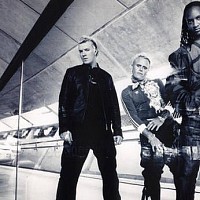

There is another percussive element that appears often throughout the song and that is the cymbal hits of ‘The Meters’ sample. The snare sounds like it is present in the 2k – 5k range and has a sharp ‘whack’ to it. Spectral Balance: There is a rich diversity of frequencies throughout this song but the dominant frequency range in amplitude is between approximately 50Hz and 150Hz. The sampled Thin Lizzy drum beat is very steady throughout and has probably been compressed to achieve this. The kick sound of all the percussion sounds is quite dominant dynamically (apart from the sword clash and sampled cymbals in parts). Most likely the same one he used to create the first hit on the album ‘Firestarter’, the E-mu SP1200. Drumsĭynamic Range: The primary drum sound used in this song is from the Thin Lizzy sample however listening to that sample it is obvious to me that Liam Howlett has also used a drum machine to beef up the sound. Mins / Secs would have been much more accurate, but the above is very close as a reference. I believe this is all part of the band imposing the manic, unapologetic and disturbing aura to their music they are renowned for. Sections will come in slightly early or late ‘off beat’ (up to half way through a bar). The bar numbers are not exact due to the nature of a lot of The Prodigy’s music.

Once again this section seemed to have two key parts so I split at Bar 47 thru 55 which is where the drums and bass line come back in and build to Verse Two. Intro: Bars 1 thru 20 however I also split the intro into two at Bar 9 thru 20 which is where the sword clashing sound appears (seemed to make sense to me)!.Taken from: John Barry’s James Bond score Song Structure Taken from: Wu-Tang Clan – “Da Mystery of Chessboxin” from the album called “36 Chambers”.

Taken from: The Meters – “Here Comes the Meter Man” (1969) Taken from: Thin Lizzy – “Johnny the Fox Meets Jimmy the Weed” (1977) Song Length (radio edit used here): 4.00mins.Key: A flat minor however the guitar appears to be tuned down to Drop D.The Moog Prodigy was so adored by Liam Howlett he appropriated the name to the band! The Song Maxim Reality: MC, beatboxing, vocals (1990–present).Keith Flint: dancing, vocals (1990–present).Liam Howlett: keyboards, synthesizers, programming, laptop, computer, samples, sequencers, turntables, drum machines, producing and mixing (1990–present).It was also a particularly opportune moment for the band as in 1994 the UK Government released the Criminal Justice and Public Order Act which was specifically aimed at the rave parties so popular at the time and ‘section V’ of the legislation included a ban on ‘music gatherings with repetitive beats’! The Prodigy’s militant nature suited the feelings of rebellion and anger against the establishment that was attempting to stifle the creativity and expression of the days youth. The visual representations in the video demonstrated the bands overall attitude to the music scene at the time demonstrating their clear intent to shake it up with something the world had not heard before.

It was directed by English film director Walter Stern who created several music videos for The Prodigy and has other notable credits including Nine Inch Nails, David Bowie, The Chemical Brothers and Madonna. The video matches the song admirably and is dark, manic, aggressive and nightmarish.


 0 kommentar(er)
0 kommentar(er)
